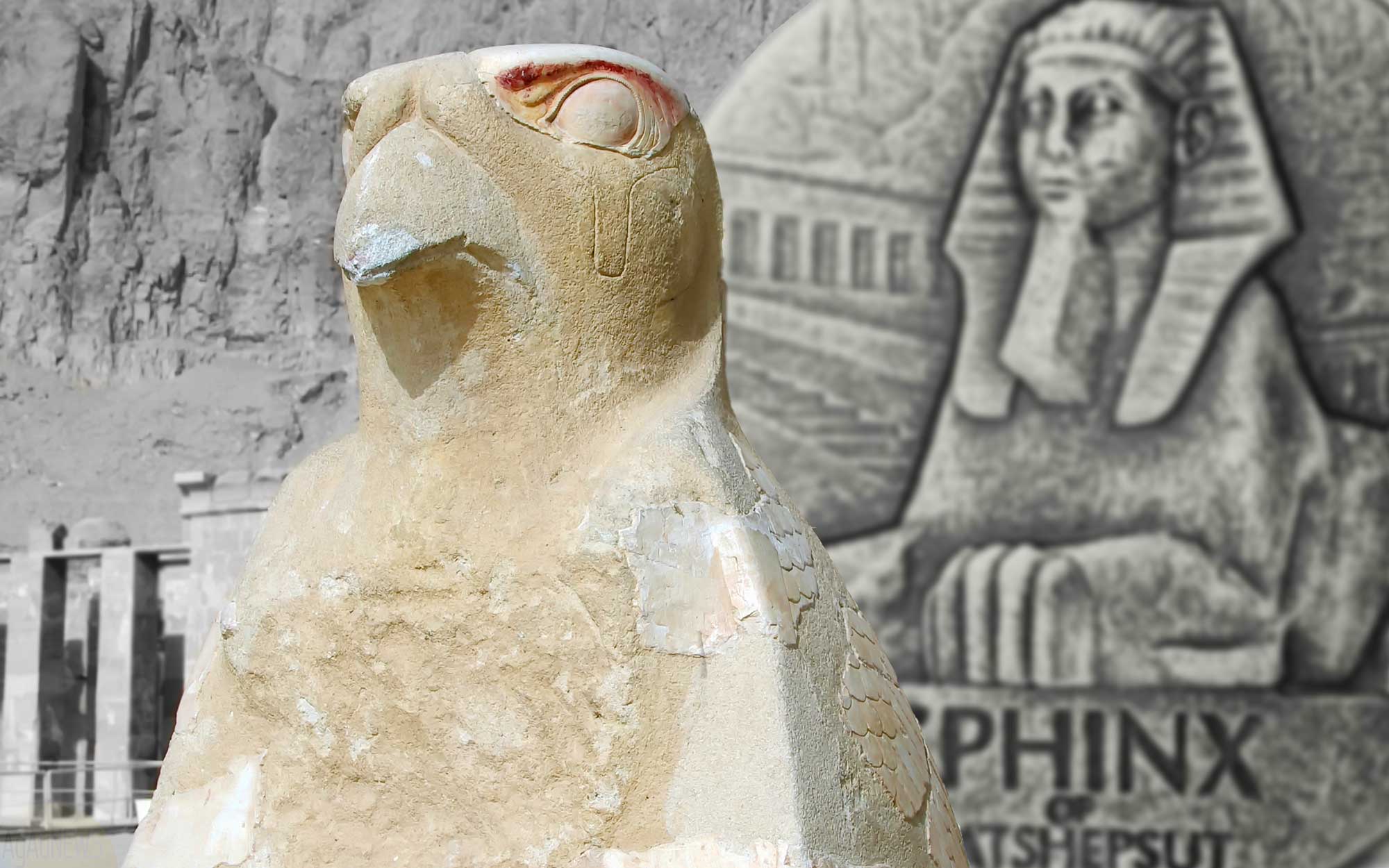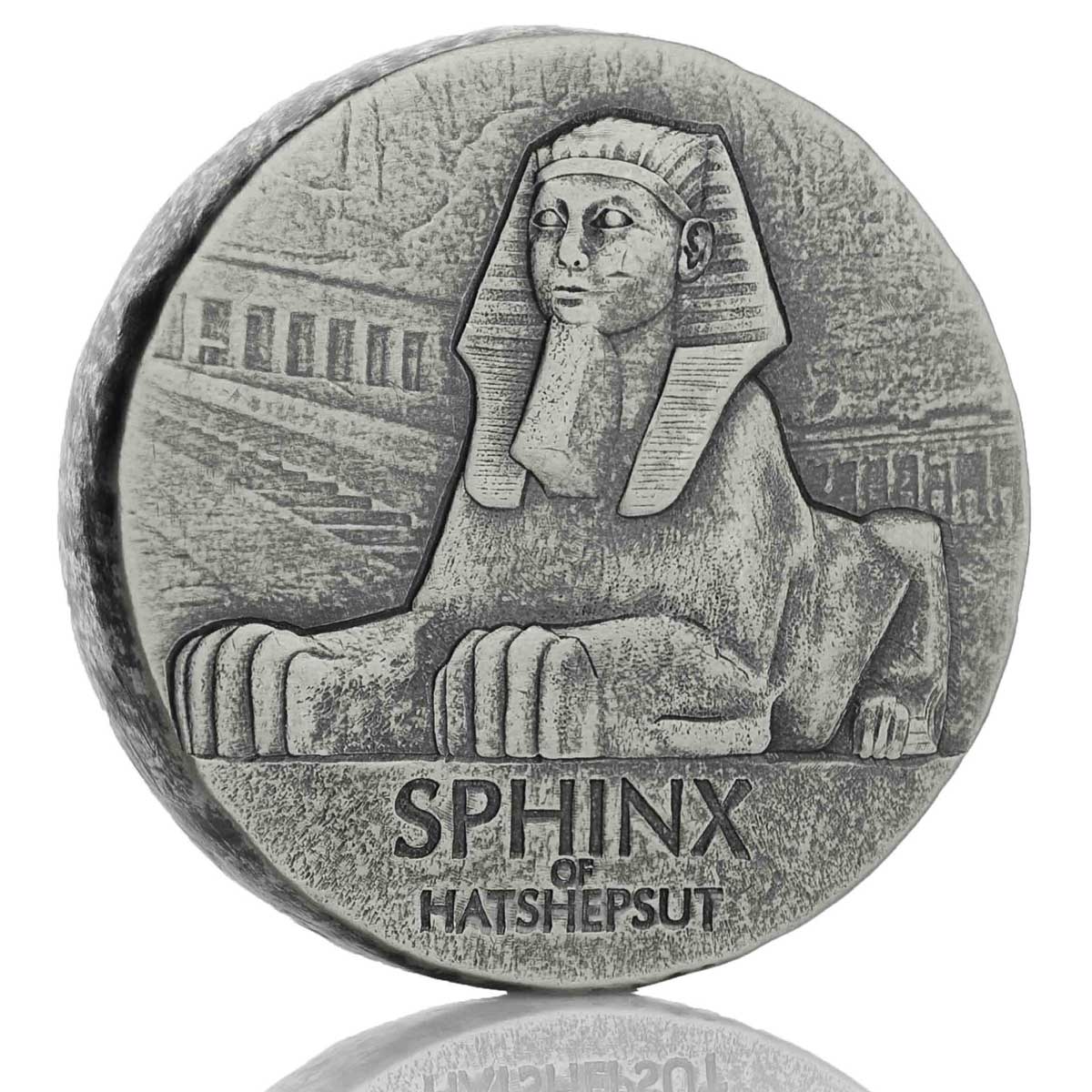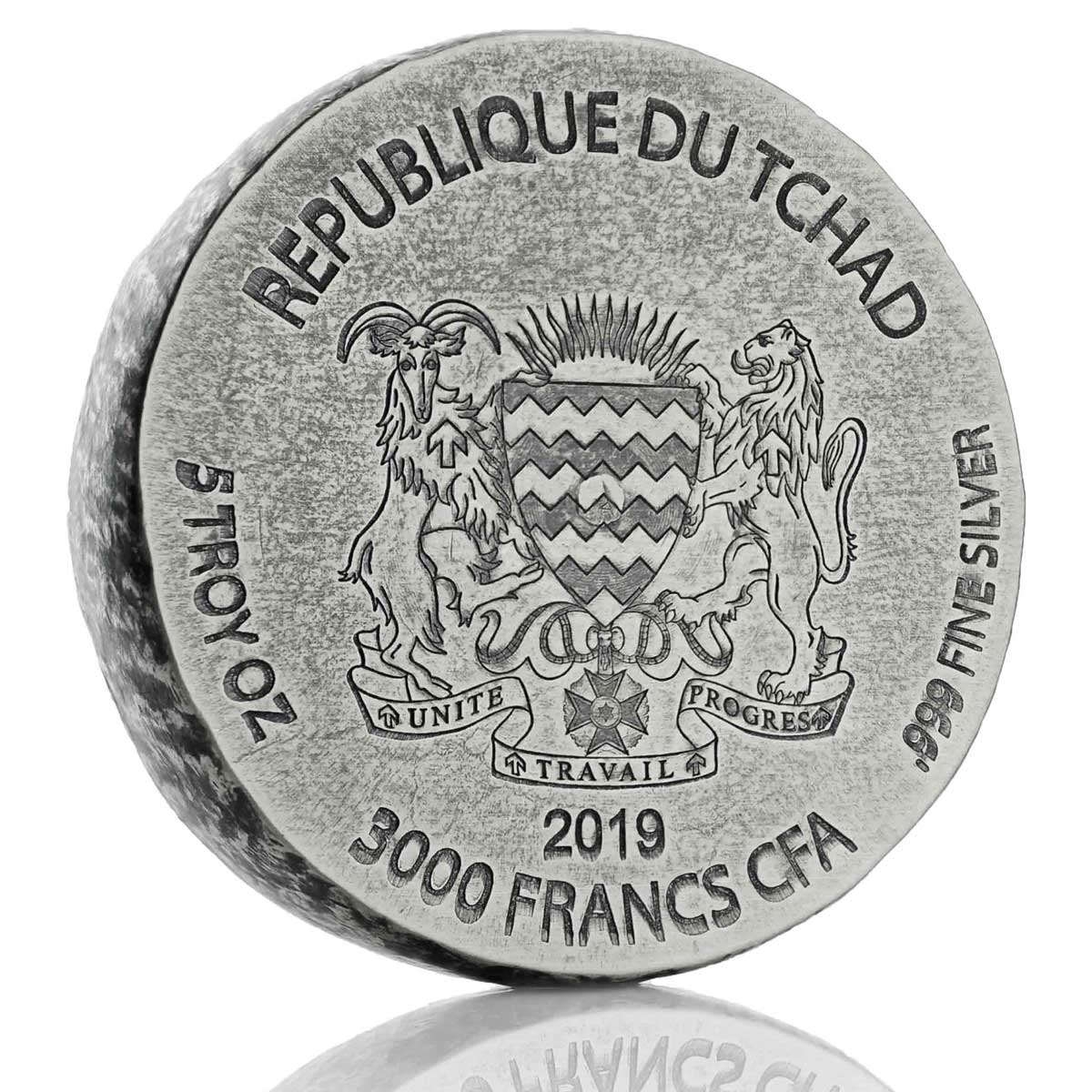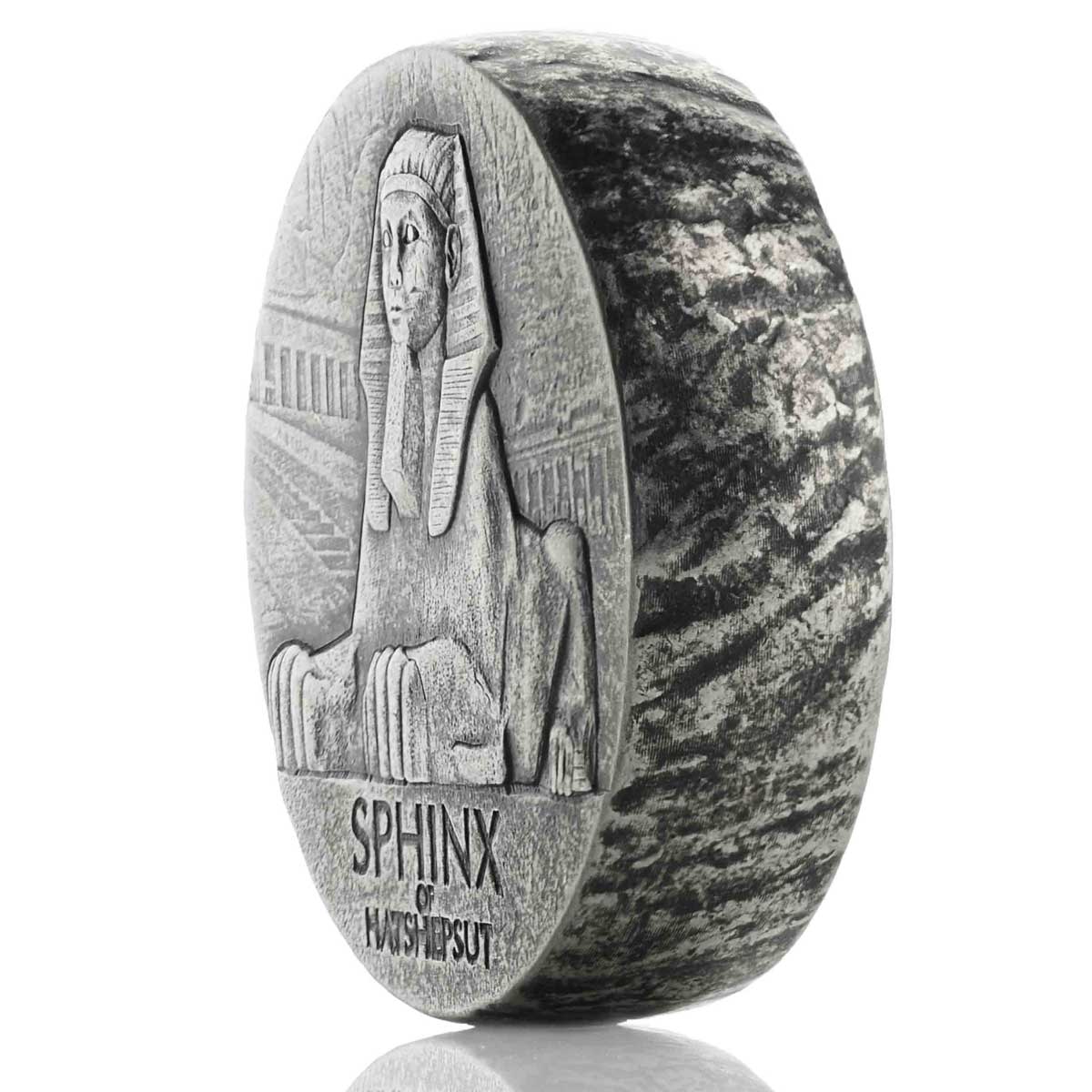Scottsdale Mints Egyptian-themed ‘hewn from rock’ bullion coins are back with the Sphinx of Hatshepsut
After a brief hiatus last year (or at least a detour to China), Scottsdale Mint’s popular series of rough-edged Egyptian-themed bullion coins is back for 2019 with a new chunky 5oz addition to the range. Launching in 2016 with King Tut, it was followed in 2017 with Nefertiti and Rameses II issues. There was even a brief detour into gold with a beautiful King Tutankhamun version of the debut release that almost looked like it was taken from a mummy.
Spec-wise this is a continuation of what has gone before. Five-ounces of 0.999 silver with a diameter similar to a one-ounce coin, but super-chunky in thickness (up to 12 mm) with an edge designed to look like the coin had been chiselled from stone. As an avid ancient history fan, I absolutely love this series. The antique finish and rough edge suit the subject perfectly, and as a true bullion coin, these are priced very competitively, especially for the collector.
The latest release moves away from depicting a figure from Ancient Egypt, and instead depicts one of the great works of one of the great Pharaohs. Hatshepsut has left behind some quite extraordinary monuments, attributed to her fairly recently after the failure of her step-son successor, Thutmose III, to erase her from the historical record. Her mortuary temple at Deir el-Bahri had at least six, possibly many more, large Sphinx statues outside it which were removed, broken up and dumped in a nearby quarry by Thutmose III. A restored one weighing seven tons now resides in The Metropolitan Museum of Art.
The depiction of the Sphinx looks spot-on, with the mortuary complex in the background. The Met sphinx portrays the female pharaoh Hatshepsut with the body of a lion and a human head wearing a nemes headcloth and royal beard and that is reproduced here. We do miss the more traditional hieroglyphic style of earlier issues, but this is certainly neat enough. Still issued for the African nation of Chad, that countries coat of arms occupies the obverse. The mintage is capped at just 20,000 pieces this time, but the small cardboard box packaging remains. Another top addition to an AgAuNEWS favourite range.
QUEEN HATSHEPSUT
Hatshepsut (“Foremost of Noble Ladies”; 1507–1458 BC) was the fifth pharaoh of the Eighteenth Dynasty of Egypt. She was the second historically-confirmed female pharaoh, the first being Sobekneferu, although various other women may have also ruled as pharaohs regnant or at least regents before Hatshepsut, as early as Neithhotep around 1600 years prior.
Hatshepsut came to the throne of Egypt in 1478 BC. Her rise to power was noteworthy as it required her to utilize her bloodline, education, and an understanding of religion. Her bloodline was impeccable as she was the daughter, sister, and wife of a king. Her understanding of religion allowed her to establish herself as the God’s Wife of Amen. Officially, she ruled jointly with Thutmose III, who had ascended to the throne the previous year as a child of about two years old. Hatshepsut was the chief wife of Thutmose II, Thutmose III’s father. She is generally regarded by Egyptologists as one of the most successful pharaohs, reigning longer than any other woman of an indigenous Egyptian dynasty. Hatshepsut was the daughter and only child of Thutmose I and his primary wife, Ahmose. Her husband Thutmose II was the son of Thutmose I and a secondary wife named Mutnofret, who carried the title King’s daughter and was probably a child of Ahmose I. Hatshepsut and Thutmose II had a daughter named Neferure. After having their daughter, Hatshepsut could not bear any more children. Thutmose II with Iset, a secondary wife, would father Thutmose III, who would succeed Hatshepsut as pharaoh.
Hatshepsut was one of the most prolific builders in ancient Egypt, commissioning hundreds of construction projects throughout both Upper Egypt and Lower Egypt. Arguably, her buildings were grander and more numerous than those of any of her Middle Kingdom predecessors’. Later pharaohs attempted to claim some of her projects as theirs. She employed the great architect Ineni, who also had worked for her father, her husband, and for the royal steward Senemut.
Hatshepsut used the Sphinx in many of her projects, a fine example of which currently resides in the Metropolitan Museum of Art.
| SPECIFICATION | |
| DENOMINATION | 3,000 Francs CFA (Republic of Chad) |
| COMPOSITION | 0.999 silver |
| WEIGHT | 155.5 grams |
| DIMENSIONS | 41.0 mm |
| FINISH | Antique |
| MODIFICATIONS | Hewn-edge |
| MINTAGE | 20.000 |
| BOX / COA | Yes / No |







Leave A Comment